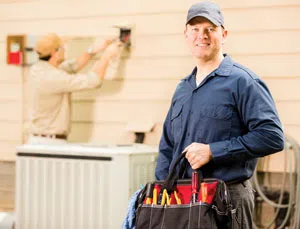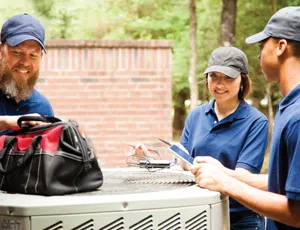The focus for the technician should always be to ascertain what the customer really wants and then determine what best fits the customer’s needs.
There is an old saying that “a customer does not buy drill bits, they buy holes.” The meaning of this as it relates to our industry is that, even though we sell technology in the form of equipment and services, we are really selling improved comfort, control and energy savings.
The customer might desire better temperature and humidity control, reduced allergy symptoms or to fix the areas in a space that seem to be too hot, cold or damp. Perhaps they want to be able to access the system remotely on their phone and precool the house before they get home and are interested in what options are best available to them.
Regardless of the specifics, the focus for the technician should always be to ascertain what the customer really wants and then determine what best fits the customer’s needs.
The alternative approach is to quickly suggest a range of products hoping one of them will pique the customer’s interest. The risk is that the customer may perceive the effort as an ‘upsell’ of unneeded parts or services and push back, however, regardless of whether one of the suggestions may actually be just what they need.
The reality is many customers may not have given a lot of thought about what they really want and/or need and what is required to fulfill. The smart approach is to work with the customer to help them first envision the ideal solution and then offer the technology that will allow them to achieve it.
It may sound simplistic, but there are several steps and conditions that should be met before the customer is likely to agree to anything. The first is to avoid selling the customer something they do not need.
While there may be compromises, selling the customer something that will not show value in their eyes can be a costly mistake for future business and send a negative message that can spread quickly through customer reviews and social media.
Uncover Customer Ideals
Once you have identified a customer looking to possibly update or replace their current system, ask why they want to do so. What are they looking to achieve? It is important for the customer to identify, as close as possible, what they are looking for with indoor air treatment and how they will control it.
Keep in mind not all customers may be aware of what can be done through today’s technology. In this case, the technician’s job is to guide the customer so they are comfortable to dream bigger than they normally might, given their limited knowledge of available options.
Highlight the solution in a way that helps them understand the capabilities — and limitations — in a language they understand. If possible, suggest several available alternative methods that will let them achieve as much of their ideal solution as possible, and be honest about where they may need to compromise.
Today’s systems offer capabilities that many people find valuable. It is not wise to assume a customer would not be interested in them, even if the feature or capability isn’t something the customer mentioned previously.
Highlight the points that relate to and allow the customer to achieve what they have identified as being most important. For example, if discussing the proper distribution of treated air to eliminate hot or cold areas, focus on how your solution will solve this challenge.
Realistic, Flexible & Patient
Take care to not over-promise what your solution is capable of and understand the challenges involved in incorporating your solution, such as space design or their budget — and, if applicable, what is needed outside of your offer before you can start your part of it.
An example could be the requirement for new windows, additional insulation or the complete reworking of ductwork buried in walls. If your solution costs $XX, and they go for it all the way, having to then tell them they will need to spend an additional 1.5x before you can start will not do your cause any favors.
Again, do not automatically expect your customer to be aware of this. There is no point in recommending the customer spend thousands of dollars on variable speed, zone control and total energy treatment if the space has leaky windows, non-existent insulation and 60-amp service. There are many types of challenges that should not be solved by simply throwing technology at it.
Thus, it is important to take a longer, holistic view of the challenge and situation and be realistic with the customer. If they really need to invest in upgrading their ductwork, offer it as a solution to start and explain the benefits. Then, have them build on this investment with a solution you can offer when they are ready for the next step that will provide additional benefits.
They will see the benefit of this approach (and won’t think you are just upselling) if you let them decide when to take the next step and emphasize you are taking a long-term outlook, understand their current situation and will be waiting to assist with the next step — even if it will be another year or three before they are ready to move forward.
You are building a relationship that can pay back over the years with preventative maintenance contracts, equipment upgrades and a loyal customer that will take that relationship with them when they move — and, possibly provide positive recommendations for you to their neighbors and social networks. Do not underestimate the value of this last part.
Finer Points
Do not get too focused and eager on pointing out all the bells and whistles of what you offer and forget to take the time to work with the customer and listen to what they have to say. Once both you and the customer are confident and comfortable with the solutions you have come up with, however, take time to reiterate how the solution will meet the air treatment needs originally discussed.
For example, if they have asthma, spend some time detailing how your solution will help. Just make sure you have enough knowledge to back up what you are claiming. It is not constructive to have your customer point out important facts that negate what you just claimed would be a great solution.
In these instances, it is critical you are aware of the finer points that need to be understood before you go there.
Also, don’t forget to educate your customer about what is required on their end to maintain the equipment in proper running order. If the customer is currently not capable of programing a thermostat or does not know what a humidistat is for, make sure you have a plan to ensure they can do these things.
This way, when the system is installed and commissioned, the customer is set up with and comfortable operating a system that works according to how they want it to. Let them know you will return after installation to check up on them and make any modifications needed so they feel protected and assured they will not be abandoned once they sign the check.
Make sure you keep your promise. Also, this would be a good time to suggest a preventative maintenance plan, especially if the customer is not able to perform basic upkeep functions like replacing air filters.
Conclusion Points
- Selling advanced technology should not be done just because it generates greater profits, but rather as a real solution to actual challenges the customer may have.
- Do not become so enamored with a technology that it becomes the default solution for everything and you end up pushing it when it should not be.
- Work with the customer to find the key points important to them and go from there. If remedial work is required to prepare the space before you can realize a sale of advanced technology solutions, make sure this is done beforehand and do not push the customer until they are ready.
- Make sure you have the knowledge before you attempt to provide a solution to specific needs such as medical conditions or other special cases, such as precise humidity control.
- Promise you will follow up with the customer after the system is up and running to ensure any modifications needed are taken care of — and then make sure you do.





